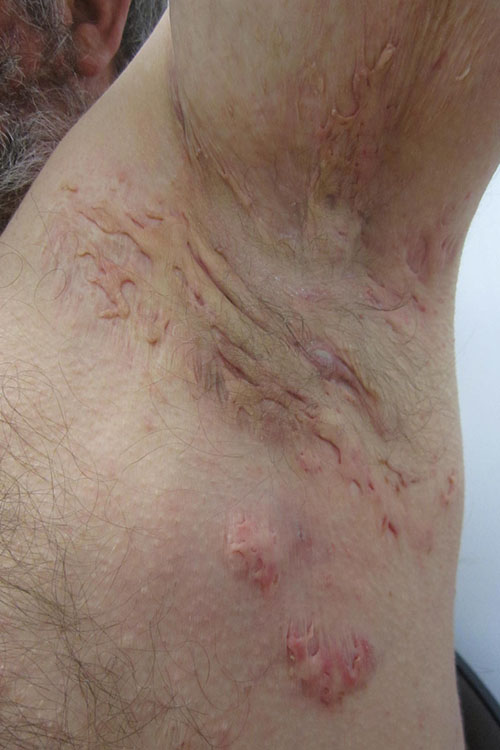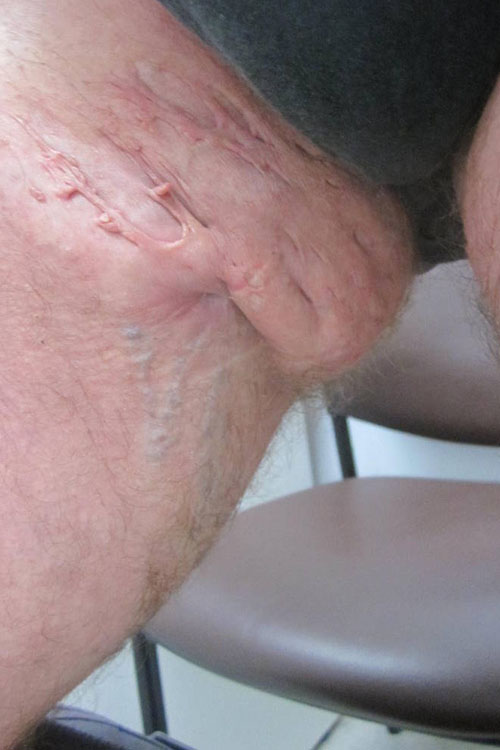Presentation of hidradenitis suppurativa
Hidradenitis suppurativa is a chronic inflammatory disorder of apocrine gland–bearing skin, such as the axillae, inguinal, anogenital, and inframammary areas. It typically presents as recurrent painful nodules, abscesses, sinus tracts and scarring. See Hidradenitis suppurativa for photos of hidradenitis suppurativa.
In most patients, the disease is chronic and difficult to treat. Some patients have milder disease, with intermittent lesions that appear like folliculitis or small boils—these patients may have no lesions for months at a time. Other patients may have occasional flare-ups of more severe disease, characterised by multiheaded comedones, recurrent abscesses and scarring, and sinus tracts in affected areas.
The pain, and psychological and social impact of hidradenitis suppurativa can severely impact quality of life.




Reproduced with permission from the A-Z of Skin [digital]. Australasian College of Dermatologists. Sydney. https://www.dermcoll.edu.au/
The pathogenesis of hidradenitis suppurativa is hypothesised to be a complex interplay between genetic and environmental factors (eg overweight, cigarette smoking, moisture, occlusion) that lead to follicular occlusion and subsequent inflammation, as well as both innate and adaptive immune dysregulationPrens, 2015. Bacterial colonisation and infection are considered to be secondary pathogenic factors that may worsen skin inflammatory responses.
The condition is relatively common and starts around puberty or early adulthood. It may occur alone, or as part of the ‘follicular occlusion tetrad’ (with severe cystic acne, pilonidal sinus and dissecting cellulitis of the scalp).
Referral to a dermatologist is often unnecessarily delayed because of misdiagnosis. Hidradenitis suppurativa is often misdiagnosed as infected boils and treated with repeated courses of inappropriate antibiotics, or incision and drainage, that do not or may not prevent further disease. Although hidradenitis suppurativa lesions are often large inflammatory cysts with purulent discharge, results from swabs can be negative or only show commensal bacteria. Growth of a pathogen on culture (eg Staphylococcus aureus, Staphylococcus lugdunensis, Actinomyces species, Streptococcus anginosus, anaerobic bacteria) may indicate hidradenitis suppurativa with secondary infection, or an infected boil.
